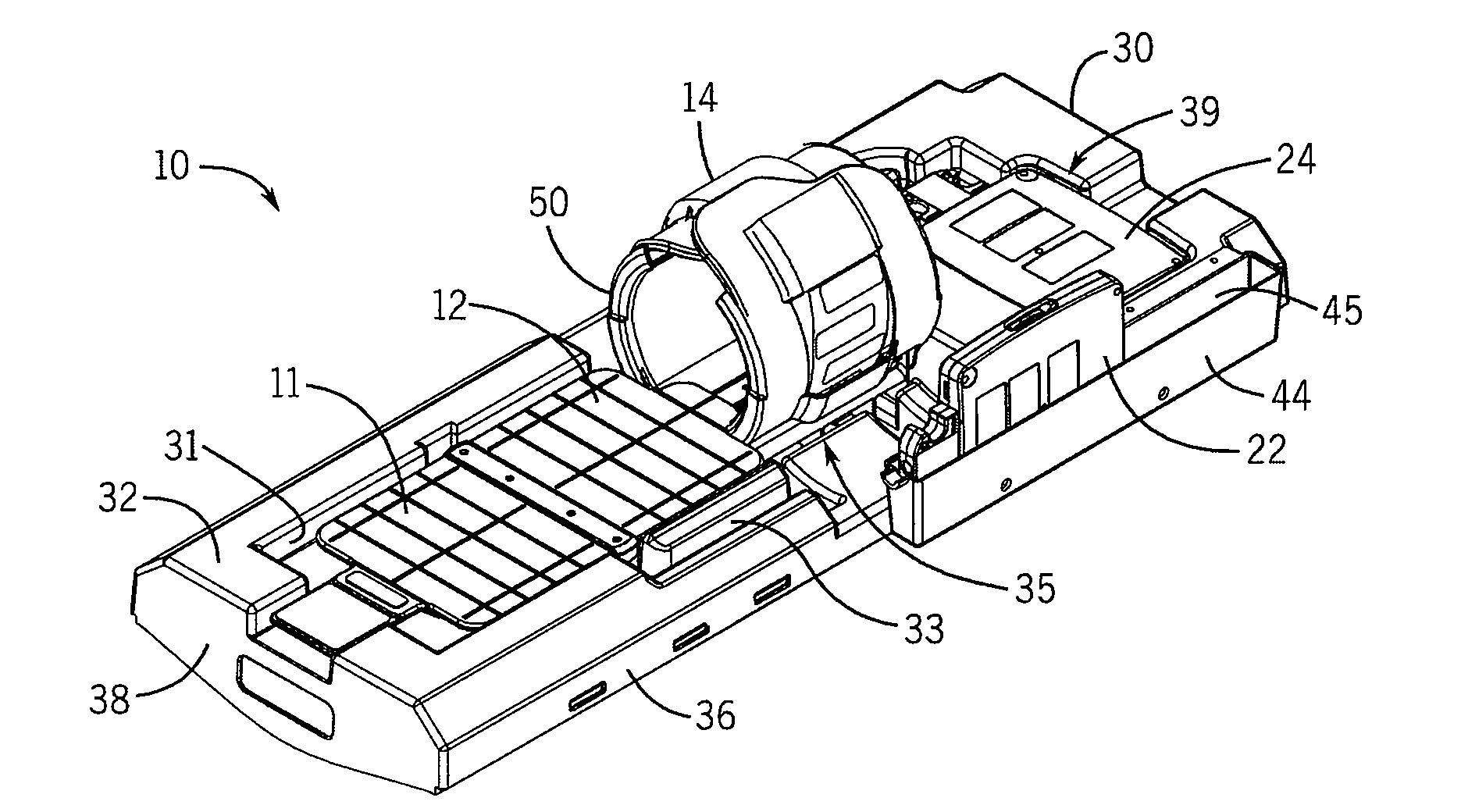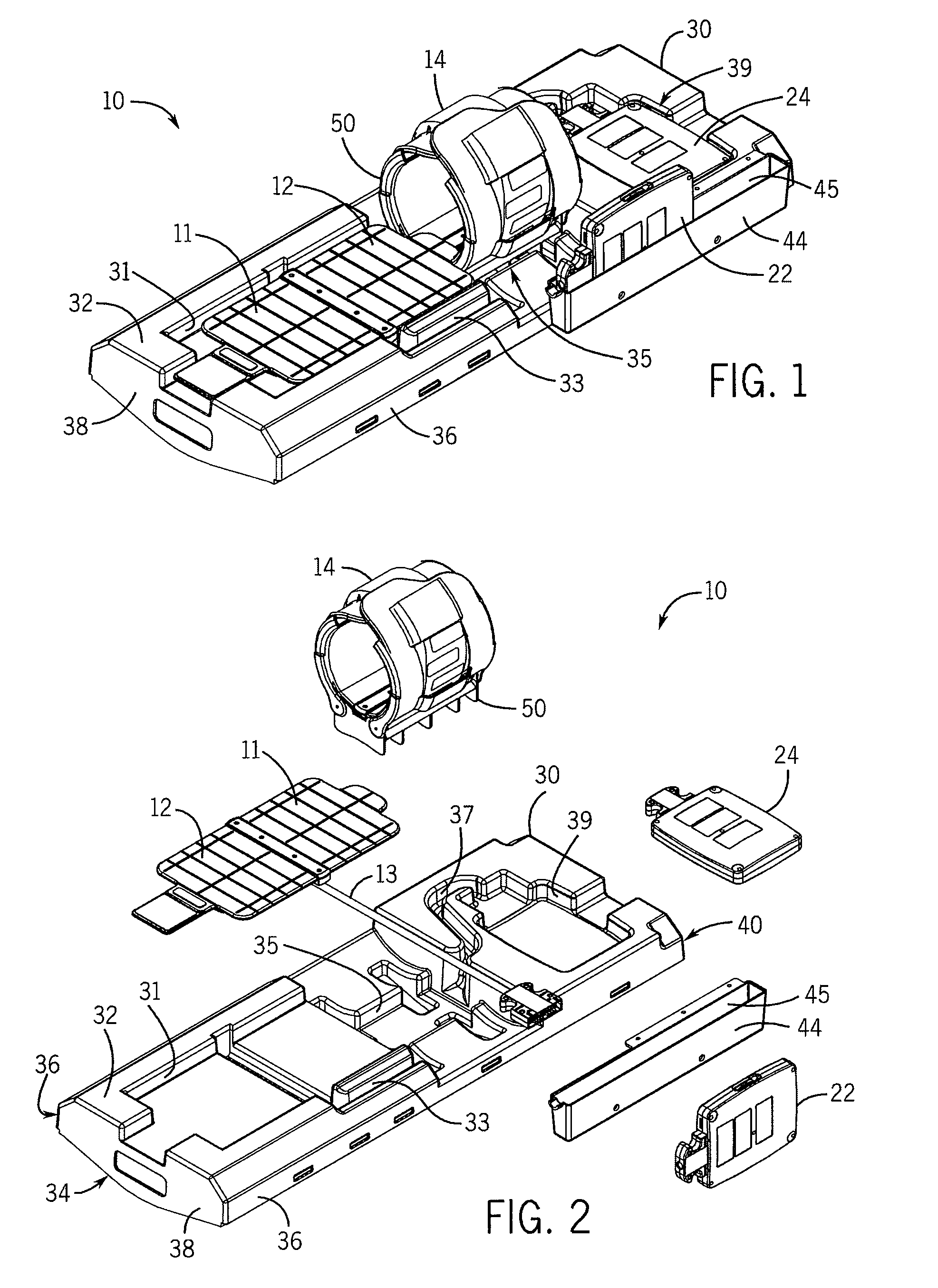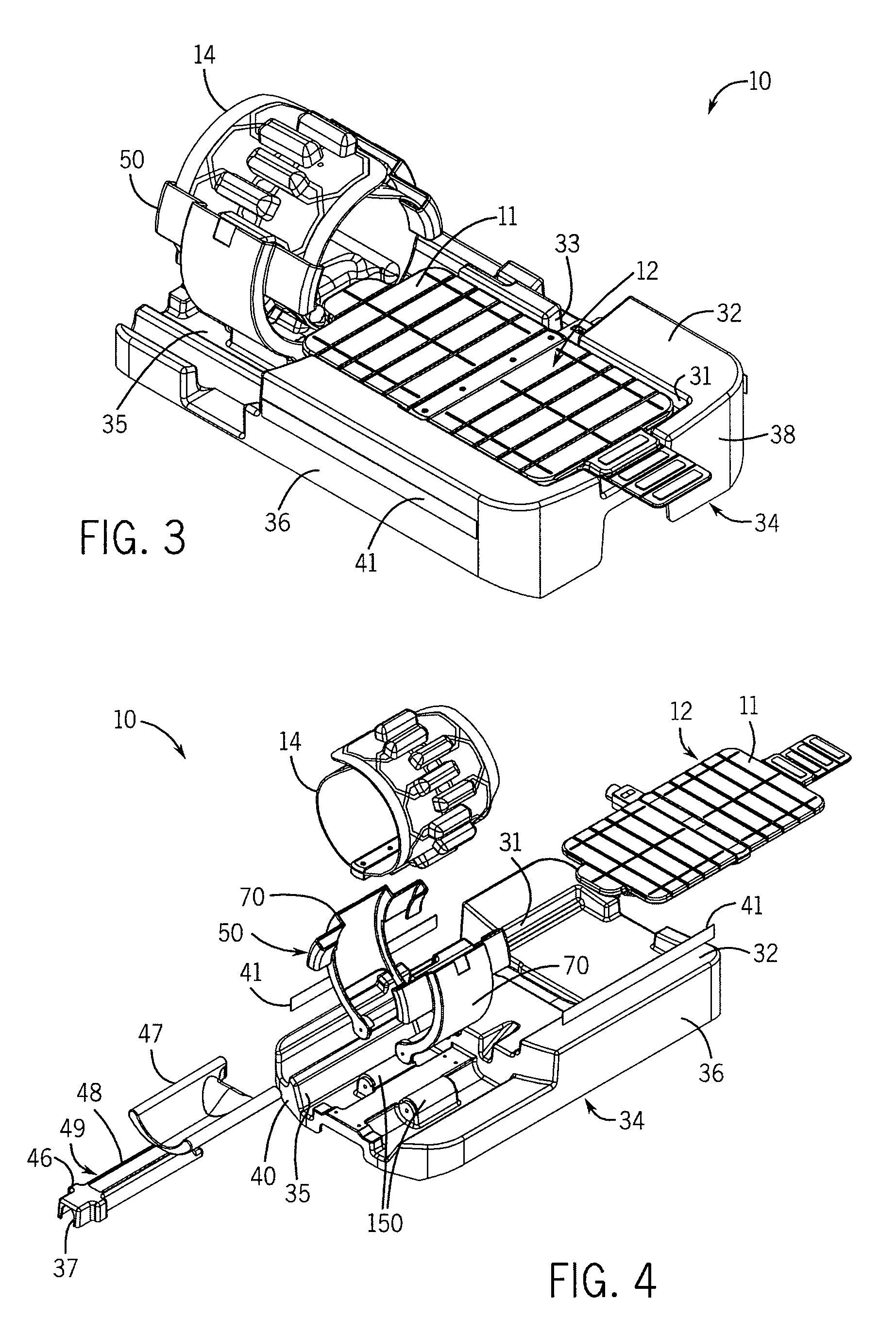Antenna Support Structure For Magnetic Resonance Imaging
a technology of magnetic resonance imaging and support structure, which is applied in the field of anti-antenna support structure for magnetic resonance imaging, can solve the problems of not always properly sized coils for patients, unique challenges of pediatric patients' mris, and cost prohibitive for some imaging centers to maintain pediatric imaging assemblies, etc., to achieve the effect of improving imaging of pediatric patients
- Summary
- Abstract
- Description
- Claims
- Application Information
AI Technical Summary
Benefits of technology
Problems solved by technology
Method used
Image
Examples
Embodiment Construction
[0071]The various features and advantageous details of the subject matter disclosed herein are explained more fully with reference to the non-limiting embodiments described in detail in the following description.
[0072]Turning initially to FIGS. 1 and 2, one embodiment of a patient support assembly 10 includes at least one patient stabilization structure used to position a patient within a MRI scanner. According to the illustrated embodiment, a first patient support 30 includes a top surface 32, a bottom surface 34, and multiple side walls 36, a front wall 38, and a rear wall 40 joining the top surface 32 and the bottom surface 34. The first patient support 30 may be a single molded assembly or, optionally, may include two or more components joined to form the first patient support 30.
[0073]The top surface 32 includes a first recess 31 configured to receive a first antenna array 12. The antenna array 12 may be, for example, an antenna array as provided by applicant and described in U...
PUM
 Login to View More
Login to View More Abstract
Description
Claims
Application Information
 Login to View More
Login to View More - R&D
- Intellectual Property
- Life Sciences
- Materials
- Tech Scout
- Unparalleled Data Quality
- Higher Quality Content
- 60% Fewer Hallucinations
Browse by: Latest US Patents, China's latest patents, Technical Efficacy Thesaurus, Application Domain, Technology Topic, Popular Technical Reports.
© 2025 PatSnap. All rights reserved.Legal|Privacy policy|Modern Slavery Act Transparency Statement|Sitemap|About US| Contact US: help@patsnap.com



